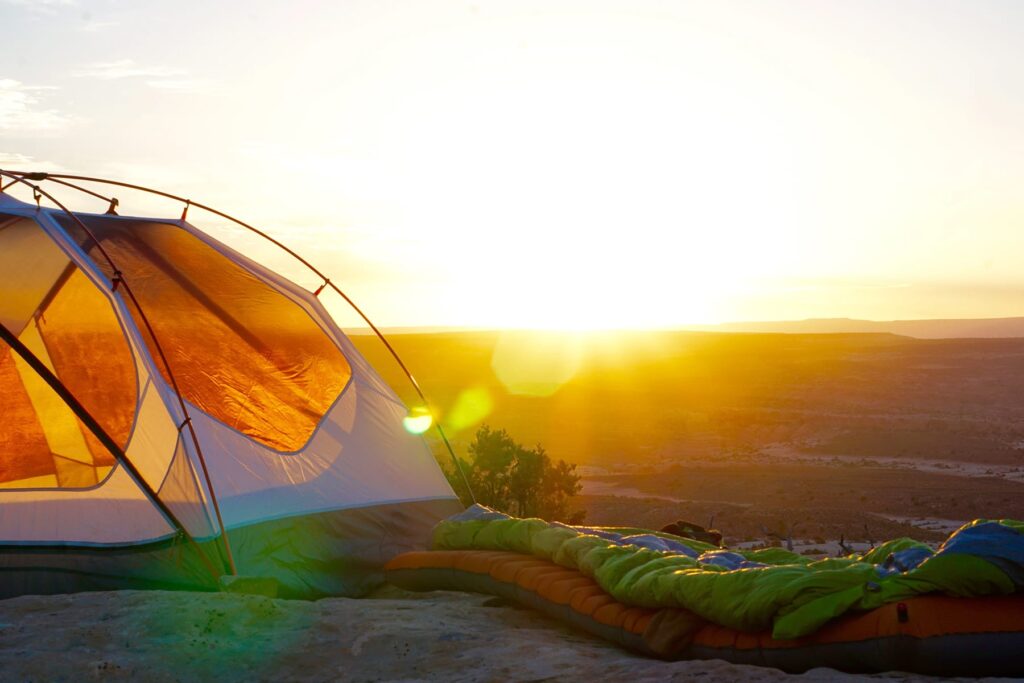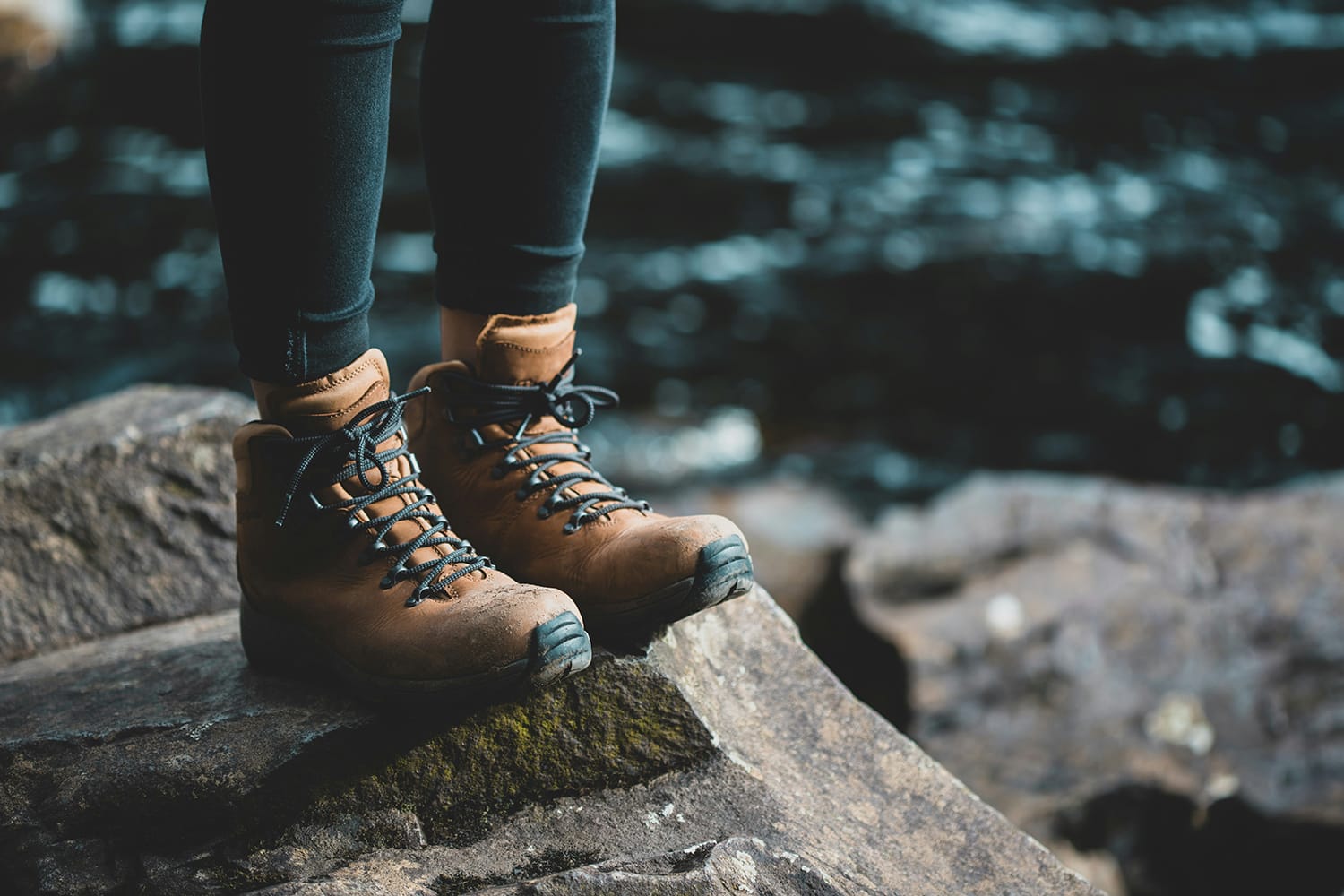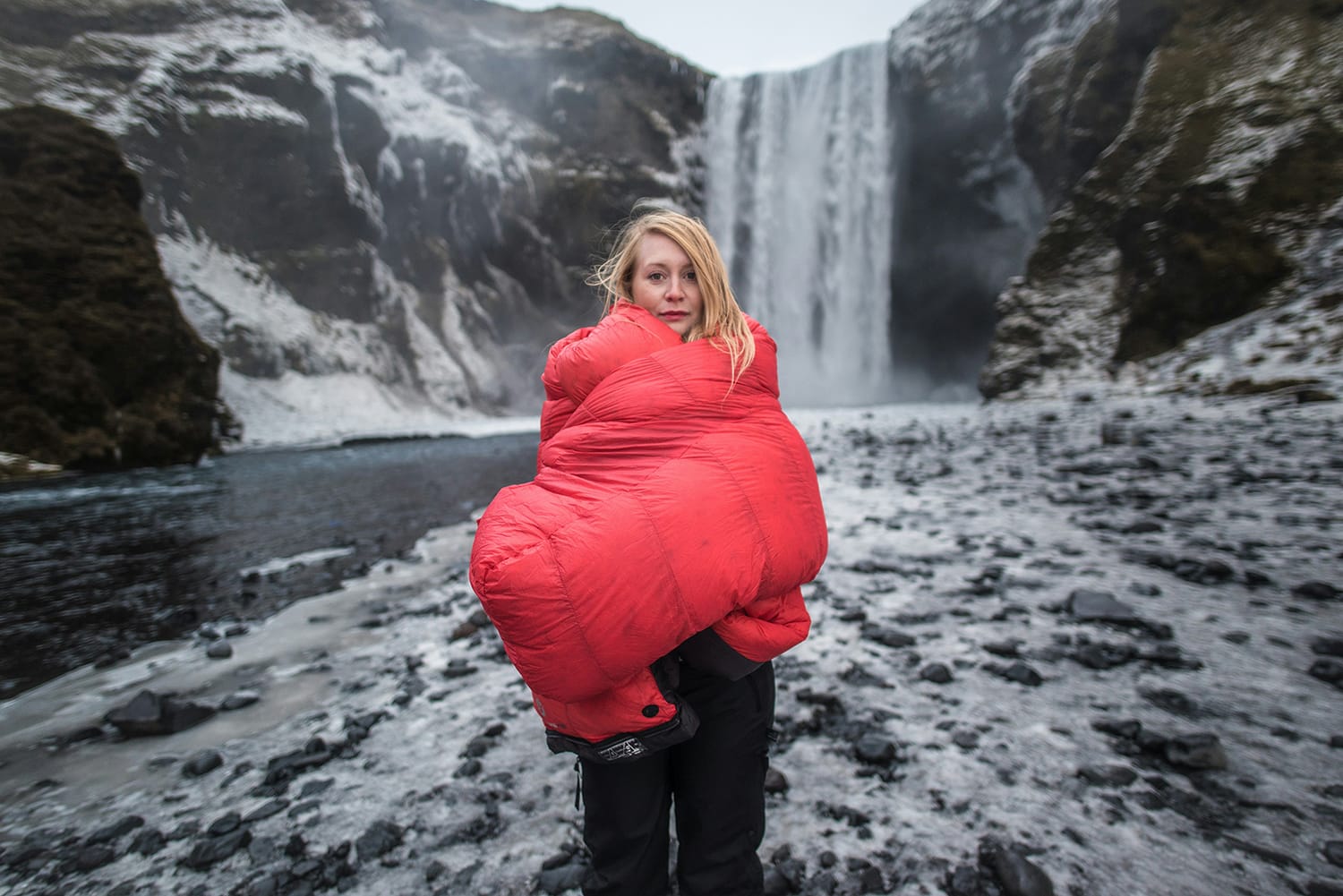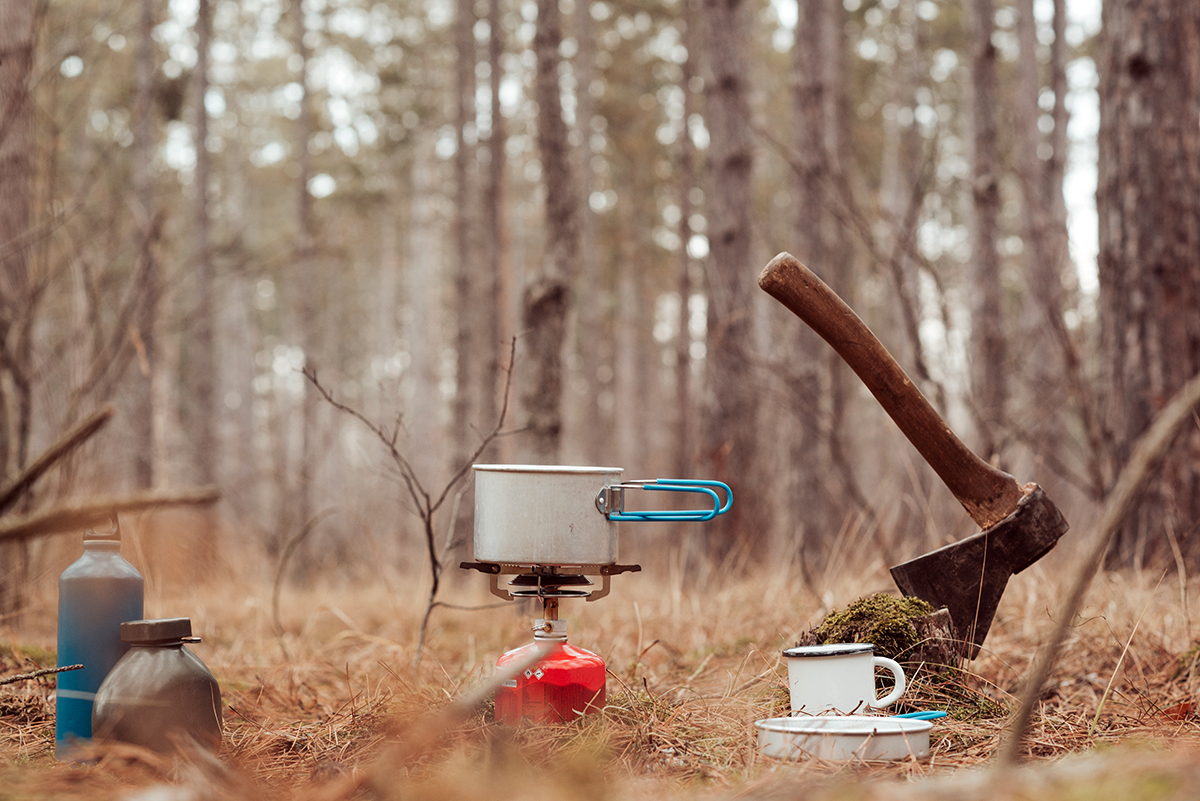Embarking on an overnight hike is an exhilarating adventure that combines the thrill of the outdoors with the satisfaction of self-sufficiency. However, the key to a successful and enjoyable experience lies in being well-prepared with the right gear.
Packing the essentials not only ensures your comfort and safety but also allows you to fully immerse yourself in the beauty of nature without unnecessary worries.
In this guide, we’ll walk you through everything you need to pack for an overnight hike, from essential gear and clothing to food and navigation tools, so you can confidently tackle the trail and create unforgettable memories.
Essential Gear
Backpack
Choosing the right backpack is crucial for a comfortable and successful overnight hike. Look for a pack that suits your body size and shape, typically ranging from 40 to 60 litres for an overnight trip. Features to consider include padded shoulder straps, a supportive hip belt, and multiple compartments for organising your gear. A well-fitted backpack ensures proper weight distribution, reducing strain on your back and shoulders.
Shelter
Your choice of shelter depends on the environment and personal preferences. Common options include tents, hammocks, and bivy sacks. When selecting a shelter, consider factors such as weather conditions, weight, and ease of setup. For example, a lightweight tent with a rainfly is ideal for unpredictable weather, while a hammock can be a comfortable alternative in warmer climates. Ensure your shelter provides adequate protection and comfort for a restful night’s sleep.
Sleeping System
A good night’s sleep is essential for maintaining energy levels on the trail. Your sleeping system typically includes a sleeping bag and a sleeping pad. Choose a sleeping bag with a temperature rating appropriate for the conditions you’ll encounter, and decide between down or synthetic insulation based on weight, packability, and moisture resistance. Complement your sleeping bag with a sleeping pad that offers sufficient insulation and comfort. Inflatable pads provide excellent cushioning and pack down small, while foam pads are more durable and affordable.

Clothing
Layering System
Dressing in layers is crucial for maintaining comfort and regulating body temperature during your hike. A proper layering system typically includes:
- Base Layers: These are your first line of defence against moisture. Choose moisture-wicking materials like merino wool or synthetic fabrics that keep sweat away from your skin, keeping you dry and comfortable.
- Insulating Layers: Depending on the weather, you’ll need one or more insulating layers to retain body heat. Fleece jackets and down or synthetic puffy jackets are excellent choices, as they provide warmth without adding too much bulk.
- Outer Layers: Your outer layer should protect you from wind, rain, and snow. Look for waterproof and windproof jackets and pants with good breathability to prevent overheating and moisture buildup inside.
Extra Clothing
In addition to your primary layering system, pack a few extra clothing items to ensure you stay comfortable in varying conditions:
- Socks: Bring at least two pairs of moisture-wicking, quick-drying socks. Consider wool or synthetic materials that prevent blisters and keep your feet dry.
- Hats and Gloves: Depending on the season, a warm hat and gloves can be essential for keeping extremities warm. Even in summer, temperatures can drop significantly at night.
- Gaiters: In wet or muddy conditions, gaiters can keep debris and moisture out of your boots, ensuring your feet stay dry and comfortable.
- Hiking Boots:When packing for an overnight hike, selecting the right hiking boots is essential. Look for boots that provide both comfort and durability, as you’ll need to navigate varied terrains and weather conditions. Prioritise waterproof materials to keep your feet dry, and ensure the boots offer ample ankle support to prevent injuries on rugged paths. Consider the weight of the boots as well; lightweight options can reduce fatigue over long distances. Properly broken-in boots are a must to avoid blisters and discomfort during your hike.
Food and Water
Meal Planning
Proper nutrition is vital for maintaining energy levels and overall well-being during your hike. Plan your meals to be lightweight, nutritious, and easy to prepare. Some ideas include:
- Dehydrated Meals: These are lightweight and easy to prepare by just adding hot water. Many outdoor brands offer a variety of options catering to different dietary needs.
- Snacks: Bring a mix of high-energy snacks like trail mix, energy bars, jerky, dried fruits, and nuts. These are easy to eat on the go and provide a quick energy boost.
- Breakfast and Lunch Options: Consider oatmeal packets for breakfast and wraps or tortillas with nut butter or tuna packets for lunch. These are easy to pack and require minimal preparation.
Cooking Equipment
For preparing hot meals and drinks, you’ll need a compact and efficient cooking setup:
- Lightweight Stove: Choose a portable stove that fits your needs, such as a canister stove, alcohol stove, or solid fuel stove. Ensure you have enough fuel for the entire trip.
- Cookware and Utensils: A lightweight pot, a spork or spoon, and a cup or mug are typically sufficient. Some stoves come with integrated pots, reducing the overall weight and bulk.
- Fire Starter: Waterproof matches, a lighter, or a fire steel can help you start a fire for cooking or warmth if needed.
Water Management
Staying hydrated is crucial, and having a reliable water source is essential. Plan for how you’ll carry and purify your water:
- Water Bottles or Hydration System: Carry water in durable bottles or use a hydration reservoir with a drinking tube for easy access. The capacity you need depends on water availability along your route.
Water Purification Methods
Always treat water from natural sources.
Options include:
- Water Filters: Portable filters remove bacteria and protozoa. Some models also filter out viruses.
- Chemical Purifiers: Tablets or drops that use chlorine dioxide or iodine to kill pathogens.
- UV Purifiers: Devices that use ultraviolet light to sterilise water.

Navigation and Safety
Navigation Tools
Proper navigation is crucial for staying on course and avoiding getting lost. Equip yourself with reliable navigation tools and know how to use them:
- Maps and Compass: A detailed topographic map of the area and a compass are essential. Make sure you know how to read the map and use the compass for basic navigation.
- GPS Devices: Handheld GPS units or GPS-enabled smartphones with offline maps can provide precise location data. Ensure your device is fully charged, and carry a backup power source.
- Trail Apps: Download hiking apps that offer offline maps and route planning features. These can be a great supplement to traditional maps and GPS devices.
Safety Gear
Safety gear is essential for dealing with unexpected situations and ensuring your well-being:
- First Aid Kit: Carry a well-stocked first aid kit tailored to your needs. Include bandages, antiseptic wipes, pain relievers, blister treatment, and any personal medications.
- Multi-tool or Knife: A versatile multi-tool or a sturdy knife can assist with various tasks, from preparing food to repairing gear.
- Emergency Whistle: A loud whistle can signal for help if you get lost or injured. Many backpacks come with built-in whistles on the chest strap.
- Signaling Devices: Reflective mirror or a small flare can help rescuers locate you in an emergency.
- Fire Starter: In addition to your cooking setup, carry an extra fire starter (waterproof matches, lighter, or fire steel) for emergencies.
- Personal Locator Beacon (PLB): For hikes in remote areas, a PLB can send a distress signal with your location to emergency responders.
Personal Items
In addition to essential gear and safety equipment, you’ll need a few personal items to ensure comfort and well-being on your hike.
Toiletries
While you want to keep your pack light, some basic toiletries are necessary for hygiene and comfort:
- Biodegradable Soap: Use for washing your hands, body, and dishes without harming the environment.
- Toothbrush and Toothpaste: A travel-sized toothbrush and a small tube of toothpaste help maintain oral hygiene.
- Toilet Paper: Bring a small roll or pre-packaged wipes, and always pack out used paper in a sealed bag.
- Sanitiser: A small bottle of hand sanitiser is useful for cleaning your hands when water isn’t readily available.
Sun Protection
Protecting yourself from the sun’s harmful rays is crucial, even on overcast days:
- Sunscreen: Choose a broad-spectrum sunscreen with at least SPF 30. Reapply regularly, especially if you’re sweating or swimming.
- Lip Balm: A lip balm with SPF will protect your lips from getting sunburned.
- Sunglasses: Quality sunglasses protect your eyes from UV rays. Look for polarized lenses to reduce glare.
- Hat: A wide-brimmed hat provides shade and helps keep you cool.
Insect Protection
Depending on the season and location, insects can be a nuisance. Protect yourself with:
- Insect Repellent: Choose a repellent with DEET, picaridin, or natural alternatives like oil of lemon eucalyptus.
- Bug Net: In areas with heavy mosquito activity, a head net can provide extra protection.
Miscellaneous Items
A few additional items can enhance your comfort and convenience:
- Headlamp or Flashlight: Essential for navigating in the dark. Bring extra batteries or a backup light.
- Trekking Poles: These can help with balance and reduce strain on your legs during steep ascents and descents.
- Camera: Capture the memories of your adventure. Ensure it’s lightweight and durable.
- Small Repair Kit: Include items like duct tape, safety pins, and a needle and thread for gear repairs.

Additional Tips
Packing Efficiently
Packing efficiently not only makes your gear more accessible but also ensures better weight distribution, enhancing your overall comfort on the trail:
- Weight Distribution: Pack heavier items closer to your back and towards the middle of the pack. This helps maintain balance and reduces strain on your shoulders and hips.
- Accessibility: Keep frequently used items like snacks, water, maps, and a first aid kit in external pockets or at the top of your pack for easy access.
- Compression Sacks: Use compression sacks for your sleeping bag and clothing to save space and keep your pack organised.
Leave No Trace Principles
Following Leave No Trace principles is crucial for minimising your environmental impact and preserving nature for future hikers:
- Plan Ahead and Prepare: Know the regulations and special concerns for the area you’ll visit. Prepare for extreme weather and emergencies.
- Travel and Camp on Durable Surfaces: Stick to established trails and campsites. Camp at least 200 feet from lakes and streams.
- Dispose of Waste Properly: Pack out all trash, leftover food, and litter. Dispose of human waste in catholes dug 6-8 inches deep, at least 200 feet from water, trails, and campsites.
- Leave What You Find: Preserve the past by leaving rocks, plants, and other natural objects as you find them.
- Minimise Campfire Impact: Use a lightweight stove for cooking and enjoy a candle lantern for light. Where fires are permitted, use established fire rings and keep fires small.
- Respect Wildlife: Observe wildlife from a distance. Never feed animals and store food securely.
- Be Considerate of Other Visitors: Respect other visitors and protect the quality of their experience. Yield to other users on the trail and keep noise levels down.
Weather Considerations
Being prepared for varying weather conditions is essential for a safe and enjoyable hike:
- Check the Forecast: Always check the weather forecast before your trip and be prepared for sudden changes.
- Layering System: Pack a versatile layering system to adapt to different temperatures and conditions.
- Rain Gear: Even if the forecast is clear, bring a lightweight rain jacket and pack cover or dry bags to protect your gear.
Proper preparation is the cornerstone of a successful overnight hike. By carefully selecting and packing the right gear, clothing, food, and safety equipment, you can ensure a comfortable and enjoyable adventure.
Remember to use a good layering system for your clothing, plan your meals and water management effectively, and always carry essential navigation and safety tools. Additionally, adhering to Leave No Trace principles helps preserve the beauty of nature for future generations.
With these guidelines, you’ll be well-equipped to tackle the trail confidently, fully immersing yourself in the natural world and creating unforgettable memories. Happy hiking!





